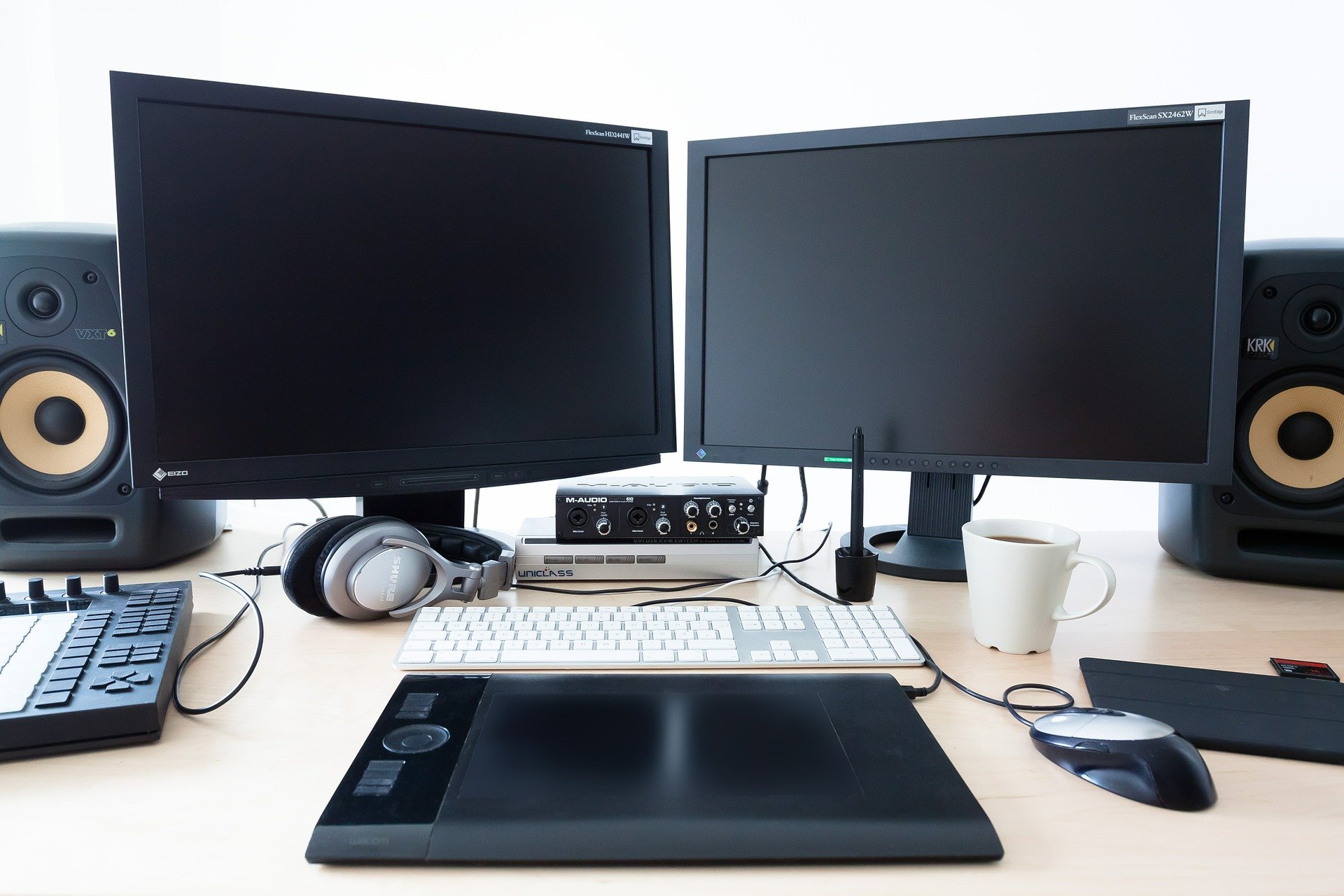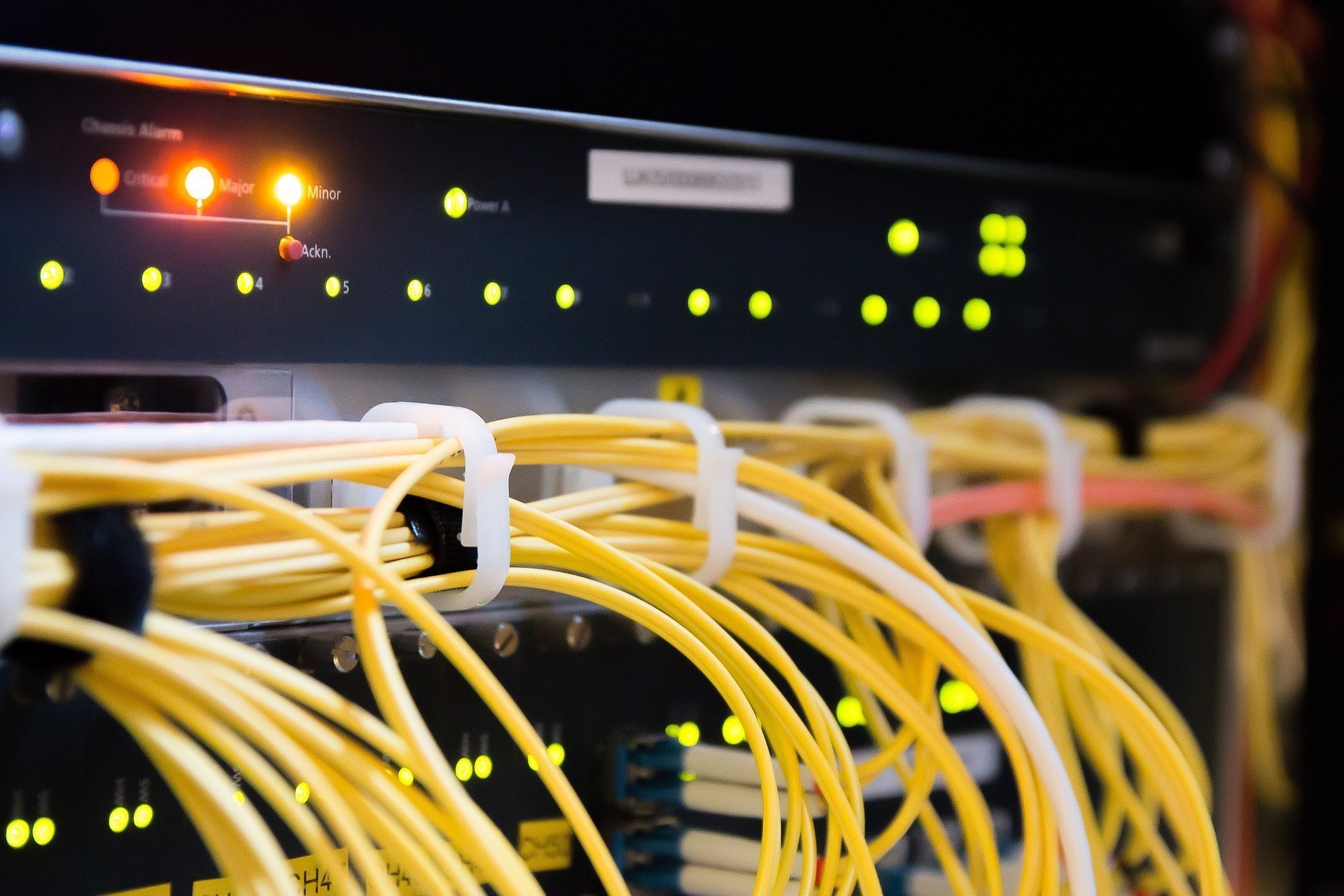Audio routing can be a complicated task for streamers who are not used to dealing with it. If you route audio using one of these hardware solutions, it will yield the greatest results when paired with an audio interface or an audio mixer.
However, while it is best practice to use the Audio interface, there are cheaper, and even free alternatives available. Each method has its benefits and its drawbacks.
Don’t connect output signals to other output signals.
Streamer’s Haven, 2019
A quick warning. Audio interfaces aren’t impervious to damage. Plugging an output source into another output source may lead to damage in both devices. Please ensure that you are only plugging in devices into the proper slots. We are not responsible for any damage that occurs from improper use.
Not familiar with Audio Interfaces or Audio Mixers? Our article about the Behringer UMC204HD audio interface will give an idea of what they are and what they can be used for.
Hardware solutions are typically the best ways to route audio.
If you have an interface already from using a Studio XLR Microphone, you merely need to add one more thing. But we’ll get to that in a minute…
There are a number of ways to get your audio routed over to your streaming PC. Some free methods include virtual audio routing solutions, such as Windows Sound Mixer or Voicemeeter. Other ways involve cheap and inexpensive hardware options…that you may already have.
Route audio for free using Voicemeeter Banana or NDI-OBS
Let us address the monkey in the room first…Yes, you can route audio using VoiceMeeter Banana. And yeah, you can also route audio VIA NDI. In fact, these solutions are fantastic alternatives to a hardwired solution; they get the job done well enough for most people, and they’re completely free.
As you are routing audio to your dedicated streaming pc. Chances are, you want nothing but the best quality possible, as such an investment isn’t to be taken lightly.
There is a big disadvantage to routing audio over the network (How both NDI and Voicemeeter Banana work): Latency. For most, it is a non-issue; around 20-40ms of delay for a solid Ethernet connection. However, on a Wifi connection, things can, and often do quickly change for the worse.
The Latency you can experience with routing over Wifi can be as benign as 40ms, or as malignant as 210ms, or more. There are too many variables to go into troubleshooting it here, but suffice it to say, we recommend hardwiring or barring that, using a powerline adapter where possible.
In addition, it is pretty complicated for someone not familiar with the programs to set up. That said, there are a number of tutorials on YouTube that cover this subject well enough.
The Simple way: The Humble 3.5mm Cable

Routing your audio from your Gaming pc (Or any other device that has a 3.5mm output, like older smartphones…) to your streaming pc can easily be accomplished by simply plugging in a 3.5mm cable between the two. The things you’ll need will depend on if your connection is to an audio interface/mixer or the blue line-in port of your streaming pc.

Plug one of the ends into the Green port of your gaming PC. As for the other, into the blue line-in port on the streaming PC. That’s it.
Now, on your streaming pc, you’ll need to add a new Audio input source in OBS, and select the one that says “Line-in”.
We should mention the drawback of this setup. As the Green port is occupied typically by speakers or headphones, you will be unable to hear audio from the gaming pc without the streaming pc being on. You can work around this limitation using a 3.5mm TRS splitter.
The reason this works is that an output, plugged into an input, acts as an input as if it were a microphone. It is simply data/electricity flowing from one side to another.
Routing audio The better way: Using a 3.5mm to 1/4″ cable into an Audio Interface or Mixer

Using a 3.5mm – 1/4″ cable, you can plug the 3.5mm into the green port of your gaming pc. The 1/4″ jack will plug into the second 1/4″ input on your Audio Interface/Audio Mixer.
This cable comes in two variants, and your choice will depend on if you want true stereo or a downmixed mono signal that copies the single-channel over to both Left and right.
- 3.5mm to 3.5mm cable +/- A 3.5mm to 1/4″ adapter (for more compatibility across devices)
- A 3.5mm to 1/4″ cable (For a simpler setup. Mono)
- A 3.5mm to 1/4″ Stereo Cable (For True Stereo) May need to upgrade your interface to a 4i4 for stereo to work alongside your mic. Downmix to mono is your other option.
On Mixers:
With an Audio Mixer, you gain some control over the input signal before it reaches your pc. You can apply an 80hz High Pass filter here, as well as tune the Low/Mid/Highs of the signal. However, these functions can be done using free VST plugins just before it hits OBS.
A Mixer tends to be more expensive, but gives you a fair bit of extra control over your audio signals, that some people may prefer. This is especially true when you have a large mixer capable of 8+ inputs, and can control each channel’s volume manually on the fly.
Here’s an example where a high input mixer is preferrable to an Audio Interface:
Say you have 3 of those channels in Stereo. You could be projecting three different songs into it, and Quickly crossfade between the three manually by sliding up one set, and another set down at the same time. Faders make this far easier over the knobs usually present in audio interfaces.
HDMI – The Best way, if you have a capture card

Of course, the final method of sending audio from one pc to another is using a capture card’s HDMI. See, HDMI cables carry connections for audio, and as such, you are able to pass audio from one device to another using it.
This article over on filmora details the process of doing this. however, if you are curious as to the details involved, @crason8 on twitter has a bunch of experience with this setup. He could help fill in the gaps to the intricacies of his setup that we are unaware of.
What about electronic buzz from the analog signal from the device?
A totally viable concern. Yes, routing audio via 3.5mm on your motherboard to anything will most likely result in some analog noise from the poor shielding on the motherboard I/O. If you care enough, using an external USB sound card can eliminate this issue, but is an added cost to an already somewhat expensive setup (If you are considering a dedicated streaming pc setup.)
Some motherboards will have sufficient port shielding, but not always.
The shielding on Audio Mixers and interfaces are more than sufficient to combat electronic buzz. However, the wires you use are still susceptible to interference. HDMI does not usually have this issue, as the wires in HDMI cables are typically shielded, as are the ports on most devices that use HDMI.
Virtual Routing VIA NDI or Voicemeeter is more or less immune to electronic interference, but have the drawback of latency.
How do I listen to the source?

You can then choose to monitor your “Mix” halfway down the middle if you have the Behringer 204HD. This will allow you to monitor all sources from both your inputs and your outputs through your headphones plugged into the “Phones” port.
This Mix knob is the reason we chose the UMC 204HD over the smaller UMC22. It is super handy to just drown out the world in sound-canceling headphones. Want to just hear music from the output from Spotify on PC? Just turn the mix knob all the way to the right.
Turning the kob all the way to the left allows you to hear exactly what your microphone hears. If you hear a lot of background noise, consider some room acoustic treatment.
That’s pretty much all that you need to know to be able to route audio properly. Now we can play with things like ASIO on OBS & VST Plugins to really tune your audio to the next level.
Fun things you can do with ASIO

If you use a plugin called OBS ASIO, using your audio interface in the newly available ASIO source will allow you to do some fun things. We’ve written a whole article on this subject, as you are able to create a 7.1 sound setup as well as send true stereo.
Don’t forget your VST plugins
VST plugins have to be one of the coolest rabbit holes we’ve ever fallen into. No joke. We got some free plugins that really perform well that will dial in your microphone, no matter which you use.




